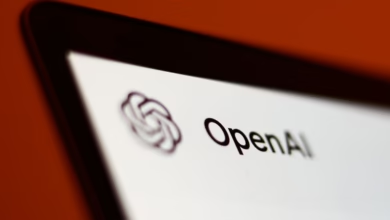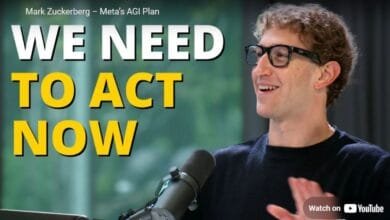When Algorithms Paint Like Ghibli: Copyright’s Uncharted Territory

▼ Summary
– Recent advancements in generative AI, like OpenAI’s Sora and GPT-4o, can replicate distinct artistic styles, raising urgent copyright and creative ownership questions.
– Studio Ghibli’s unique aesthetic, painstakingly crafted over years, is being mimicked by AI, sparking significant online discourse about inspiration versus infringement.
– This issue extends beyond animation, affecting musicians, writers, and photographers, with core concerns about training data, authorship, and economic impact.
– Current copyright laws, which protect expression but not style, are being challenged by AI’s ability to generate works based on learned styles from vast datasets.
– Solutions being explored include ethical AI development, clearer labeling, new licensing models, legislative updates, and technological tracking to balance innovation and human artistic value.
Recent advancements in generative AI, particularly models like OpenAI’s Sora and the image generation capabilities within ChatGPT (powered by GPT-4o), have demonstrated a striking ability to replicate distinct artistic styles. This capability was vividly illustrated by AI-generated scenes mimicking the beloved aesthetic of Studio Ghibli, sparking not just technological awe but also urgent questions about the very foundations of copyright and creative ownership in the digital age. The ease with which these tools can adopt a hard-earned style raises immediate concerns for creators and legal experts alike.
The legendary Japanese animation house, Studio Ghibli, built its empire not just on captivating stories but on a painstakingly crafted, instantly recognizable aesthetic. From the determined glint in Chihiro’s eyes to the comforting bulk of Totoro, every frame feels imbued with a unique human touch. So, when AI models begin spitting out remarkably similar visuals, it forces a confrontation with uncomfortable questions. While Studio Ghibli itself has remained characteristically quiet, the online discourse, particularly among fan communities as highlighted by TechCrunch, has ignited. Fans – and creators everywhere – are asking: where does inspiration end and infringement begin in the age of artificial intelligence?
This isn’t merely about one beloved studio. The Ghibli example serves as a high-profile case study for a much broader, systemic challenge rippling across all creative industries. Your gut feeling that copyright seems to be “melting” lately isn’t unfounded; perhaps “morphing” or “being stress-tested” is more accurate. The digital cooker of AI development is firing up new possibilities, but it’s also putting established legal and ethical frameworks under intense heat.
The Core of the Conflict: Style vs. Substance
Traditionally, copyright law protects the expression of an idea, not the idea itself. Crucially, it also generally doesn’t protect style. You can’t copyright “Impressionism” or “Film Noir.” An artist could legally paint in the style of Van Gogh, provided they weren’t directly copying “Starry Night.”
AI complicates this dramatically. Models like Sora aren’t (usually) directly copying existing Ghibli frames. Instead, they learn the statistical patterns that constitute the “Ghibli style” from vast datasets, which almost certainly included copyrighted Ghibli works (among countless others). The AI then generates new works embodying that learned style. Is this transformative fair use, akin to a human artist learning from the masters? Or is it derivative work on a scale previously unimaginable, potentially undermining the original creators’ market and legacy?
The scale is key. One artist mimicking a style is one thing. An AI tool allowing thousands, potentially millions, of users to generate works in that specific, hard-earned style with a simple text prompt feels fundamentally different. It raises concerns about dilution of the brand, market saturation, and the very value of developing a unique artistic identity.

Beyond Animation: A Universal Challenge
This dilemma extends far beyond animation studios. Musicians grapple with AI generating songs “in the style of” famous artists. Writers see AI churning out prose mimicking their favourite authors. Photographers witness AI creating images indistinguishable from their portfolios. The core questions remain the same:
- Training Data: Was copyrighted material used without permission or compensation to train these models? Several major lawsuits (e.g., Getty Images vs. Stability AI, class actions by authors and artists) are currently tackling this head-on.
- Authorship: Who owns the AI-generated work? The AI developer? The user who wrote the prompt? Does the original artist whose style is mimicked deserve any credit or control? Current legal frameworks weren’t designed for non-human creators.
- Economic Impact: If anyone can generate high-quality work in any style on demand, what does that mean for the livelihoods of human artists, illustrators, musicians, and writers who’ve spent years honing their craft?
Navigating the Fog: Towards the Future
There are no easy answers. Banning the technology outright seems both impractical and potentially stifling to innovation. Yet, allowing unchecked stylistic appropriation risks devaluing human creativity and undermining the principles copyright aims to protect.
We’re seeing tentative steps towards navigating this new landscape. Discussions around ethical AI development, clearer labeling of AI-generated content, new licensing models for training data, and potential legislative updates are all underway. Some propose technological solutions like robust digital watermarking to track provenance. Others emphasize the need for platforms hosting AI tools to take greater responsibility.
The Ghibli-Sora situation serves as a powerful, emotionally resonant symbol of this inflection point. It forces us to consider what we value most: the efficiency and novelty of AI generation, or the protection of unique, human-driven artistic expression that studios like Ghibli represent? The answer likely lies in finding a difficult balance – fostering innovation while ensuring that the magic conjured by human hands and hearts isn’t simply digitized, replicated, and ultimately, devalued. The structure of copyright isn’t melting away entirely, but it’s undoubtedly being reforged in the fires of artificial intelligence, and its final shape is yet to be determined.
Inspired by TechCrunch






